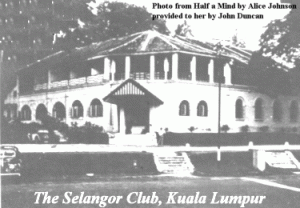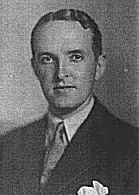A Short History of the Hash House Harriers
Hare and Hounds or Fox and Hounds style chases have been around for centuries in one form or another. Of course the original concept was to mimic the original hunting sport during times or in locations where sporting game was sparse. Some “gentlemen” substituted men for the game in an effort to add something different to the sport. There is evidence of this in colonial America as well as in England. It was a normal transition, then, to also substitute the hounds as well with runners. Men, not as well endowed with the sense of smell, required a trail of paper to their quarry. This sport was well entrenched long before these sportsmen became known as ‘hashers’ and the sport was referred to as Hounds and Hares or the Paper Chase. The Hash House Harriers received its humble beginnings in 1938 from a Britisher named Albert Stephen Ignatius Gispert, in what is now Malaysia. Having a fondness for the “paper chase”, he gathered together a group of expatriates to form a group in Kuala Lumpur that would later become a world-wide legacy. The fraternity received its name from the Selangor Club Chambers, which due to it’s lackluster food was commonly referred to as the “Hash House”.
Known as “G”, Mr. Gispert originally took on duties as the On- Sec, convincing Cecil H. Lee and Frederick “Horse” Thompson to become the first Joint Masters. The first runs averaged a dozen, although attendance could sometimes be counted on one hand. (Take heart you would-be founders out there, as this is a normal beginning.) This relatively peaceful endeavor was cut short with the advent of the Japanese invasion, of which several hashers distinguished themselves. Captain Gispert, who had been a captain in the reserves, was field promoted to the active rank of captain in the war and died in the Battle of Singapore. But, Torch Bennett reestablished the hash after the war. He also successfully sought war reparations for 24 enamel mugs, an old galvanized tin bath and two old bags.
It was some time before the international phenomena we are familiar with today began spreading around the world. A hash was formed in 1947 in Bordighera, Italy (near Milan) by some former members of the original Hash House Harriers. It ceased operations for many years, but was reborn in 1984 and is now quite alive and well as the Royal Milan and Bordighera HHH. (I sang to midnight at the ’94 Swiss Nash Hash with some of its members, while Legs played the piano. Jolly bunch! And yes, they are emphatic about being the second Hash House Harriers! S.D.) It wasn’t until 1962 that the next group was formed in Singapore (that we know of anyway). The Singapore HHH was slowly followed by others until by the Mother Hash’s 1500th postwar run in 1973, there were thirty-five known hashes around the world. This figure climbed into the hundreds by the eighties and there are now well over 1300 active hashes. The number is based on those listed in the Global Trash Hash Roster and are simply the ones who have come forward to provide information, have answered the mail or have had their information provided by interhashers or national/regional On-Sex (plural for On-Sec – secretary). A now defunct publication, Harrier International, claimed over 1700 hashes in their listing. However, closer scrutiny found hundreds of outdated contacts or dead hashes, so it is still difficult to make an informed guess. With less accuracy, it could be said that there are indeed about 1500 to 2000 hashes out there, as many were started by hashers who do not have contacts with hash publications or simply don’t care to register. Occasionally, there is a hash that finds out, usually by the accident of running into other hashers, that they, indeed, aren’t the only one in the world. Their founders were not up on global hashing or failed to pass on that knowledge to their pack. Wherever you go, the hash is there. If not, you can start one and the Global Trash Hash Bible is the most comprehensive hash reference available to assist you in that effort.
Albert Stephen Ignatius Gispert
Second Lieutenant, 371854, 2nd Battalion, Argyll and Sutherland Highlanders
Born: July 31, 1903, son of Arthur and Remedio Gispert of 80 Breakspears Road, Brockley, London, England.
Died: February 11, 1942. At approximately 4:00 a.m., while in charge of a mortar platoon. Gispert and his men were killed in action against invading Japanese forces on Dairy Farm Road, Singapore.
Note: There exists no eyewitness record of Gispert’s demise, but the preceding is the generally accepted estimate viewed through the fog of war. Research continues…


